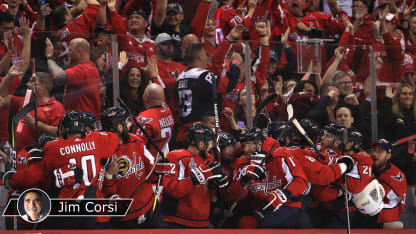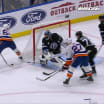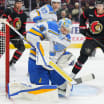2) Washington won 63 percent of the face-offs (39 of 62), including 72 percent in the first period (13 of 18).
There's a lot of stuff happening, but when you break it down, you're looking at two out of every three face-offs being won by the Capitals.
It's about controlling the puck. If you don't have the puck, it's like you're playing baseball, waiting for the ball to come to you. You don't get a turn. You're wondering "When is my turn?' When you have the puck, you make things happen.
Beyond blocked shots and face-offs, it was about speed of execution for the Capitals. If Vegas did get the puck in the offensive zone, there was collective determination by the Capitals to really get that puck back. Not just defend, but get it back and move forward.
They put a lot of pressure on Vegas. They controlled the blue lines, the neutral zone and the faceoff dots.
There were a number of times when the Golden Knights tried to make a clever play with a good chance there would be no sustained puck recovery. When they tried to put it behind Washington's defense, the Capitals were quicker to get it back.
What would happen is that the first guy would go in and absorb the hit, but the second man in was usually a Capitals player who also had support with him. He'd turn, find someone and, boom, they're out.
Washington's second-man quick was just faster than Vegas'. It's usually the other way around for the Golden Knights.
When Vegas did get the puck back, the Capitals were blocking shots, so the Golden Knights had no sustainability.
There were a couple of good plays by Capitals goalie Braden Holtby, but compared to the acrobatics and difficulty when Washington had chances, Vegas goalie Marc-Andre Fleury was way more taxed. Holtby could stay quite composed.

















